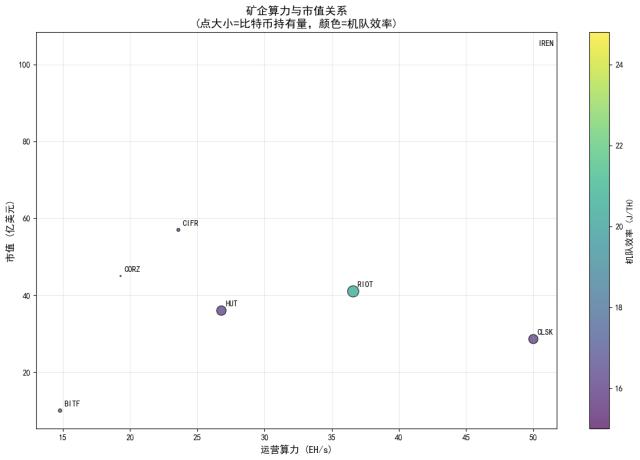In the world of Web3 gaming, we have witnessed a challenging era. From 2018 to 2023, a total of 2,817 Web3 games were launched, but sadly, 2,127 of them (accounting for 75.5%) failed, highlighting the industry's difficulties.
Although Web3 games have struggled to truly take off since 2018, each new wave in the cryptocurrency market brings renewed hope for these games. Coupled with the current bullish market expectations, we are likely to see many games achieve staggering valuations.
Looking specifically at 2024 and 2025, with the explosive growth of AI models such as DALL-E, Stable Diffusion, Midjourney, and ChatGPT, we believe that "AI penetrating Web3" will become a key driver. Building on these AI technological breakthroughs, DeGame officially announced in July the launch of its "AI-Generated Games" feature. This initiative aims to introduce a fresh attempt at revitalizing the Web3 gaming industry through a series of interoperable, composable, programmable tools and modular game/video/voice generation models.
With nearly 3 billion Web2 gamers and nearly 600 million Web3 users worldwide, Web3 games have a strong narrative foundation. However, current funding and projects are more concentrated on the infrastructure level, lacking new growth points for large-scale user adoption and conversion narratives.
The key to driving the gaming industry's development lies in technological innovation. The application of AI technology in game development is becoming increasingly mature. Utilizing AI generation models to address the typical challenges faced by Web3 games, thereby achieving breakthrough growth in the short term, may be the best solution.
01
Breaking the Ice in the "Ice Age"
The primary challenge that has previously hindered Web3 games from attracting a large player base is their lack of playability. Monotonous gameplay and rough graphics often make players feel like they are experiencing games from over a decade ago. For the average player, the core standard for evaluating a game's quality has always been its fun factor. Web3 games that overly emphasize the "Fi" aspect can only attract gold farmers and fail to achieve mass conversion of Web2 users.
However, in reality, the gaming sector, being a highly costly and time-consuming industry, requires the combined push of capital, time, and technology to thrive. As we move into 2024, AI seems to be able to bring these elements together. The development of modular AI generation tools provides stronger support for Web3 games to advance towards AAA production and high-quality improvements.
In traditional games, NPCs (non-player characters) have very limited artificial intelligence, usually operating only under fixed conditions. With AI technology, NPCs can more realistically simulate human behavior and perform more intelligent operations. For example, in "Save Me! The Guardian of Labor Law," AI NPCs engage in real-time conversational puzzles, enhancing the game's interactivity and immersion.
Moreover, AI can be used to generate environments, character images, and balance game mechanics, further enriching the game's diversity and playability. This makes interactions within the game more convenient and natural. Traditional game interaction methods, often based on keyboard and mouse, struggle to meet players' demands. AI technology enables more intuitive and vivid interaction methods, such as voice, gestures, and facial expressions.
Overall, AI's most successful application in the gaming field is undoubtedly in enhancing game experiences and personalizing game content. AI generation models can optimize the game development process within a short cycle, integrating multiple highlights of traditional Web2 games at a lower development cost. This enhances the smoothness of new user participation in Web3 games, which is a crucial step for the mass migration of Web2 users to Web3 games.
02
Unleashing Infinite Creativity
Decentralized blockchain technology is a crucial force in balancing AI (and machine learning). Firstly, it can be combined with other technologies like ZK (Zero-Knowledge Proofs) to optimize trust frameworks in machine learning. Secondly, it can effectively leverage long-tail resources, reducing the costs and barriers to using AI. On the other hand, many Web3 applications compromise user experience for security and decentralization. AI can help optimize and enhance the user experience, making it a valuable addition to the Web3 ecosystem.
When it comes to practical applications, although there are use cases for AI+DeFi and AI+DID/Social, generative AI is naturally suited for text-based, sandbox, nurturing, open-world, and UGC (User-Generated Content) gameplays that Web2 users are familiar with. By rewriting game logic with AI, introducing more uncertainty and randomness, Web3 games can create unique and exciting experiences.
For example, a significant innovation in Web3 gaming is the need for users and platforms to participate in the creative process together, rather than following a pre-planned, limited game. In these games, there is a concept of "Lore," which, in traditional games, is designed and predictable. However, with AI models, various inputs can be combined to generate unpredictable outputs, giving the game limitless possibilities.
Imagine a future where, through AR/VR devices, we can access amazing virtual worlds and instantly create 2D and 3D objects from our imagination or beyond with prompts, as if casting a magical spell. These objects are truly ours (with data hosted on a public blockchain). We can interact with intelligent AI NPCs in the virtual world and influence the entire game world's story. All this will be supported by a completely transparent open-source infrastructure.
In this vision, AI-driven Web3 gaming will unleash infinite creativity.
03
Rapid Evolution and Continuous Integration
In fact, the history of AI in game development can be traced back even further.
AI's application in game development dates back to classic games like "StarCraft" and "Diablo." At that time, developers needed AI systems to create interactive virtual worlds and characters, and these systems have since become standard configurations for developing such interactive platforms.
Early research related to AI in game development emphasized controlling non-player characters (NPCs). With the advancement of natural language processing (NLP) technology, some pioneering work has emerged in using deep learning techniques to generate game levels.
A representative example is MarioGPT, which successfully generated parts of the "Super Mario Bros." levels through a fine-tuned GPT-2 model.
As models iterate rapidly, AI's capabilities are becoming increasingly powerful. For professionals in the Web3 gaming sector, the core of attracting more users lies in how to use AI to create high-quality games and how to integrate AI-generated models into the development process.
DeGame AI is a lightweight tool focused on generative models and is also a no-code creator tool. It supports users in integrating DeGame AI's tools into the existing game production ecosystem to automate challenging content creation tasks during game development or optimization. Based on Transformer neural networks, DeGame AI also offers features such as generating text-based game videos through DeGame’s Annotation and Substation models.
We hope to see emerging, procedurally generated worlds, each with its own rich history, inhabitants, and mysteries. There will be interactive novels where stories evolve through player choices, told through generated images, videos, and audio, giving Web3 games more possibilities.
In Conclusion…
For a professional in the Web3 gaming field to complete a game project, it must at least cover interactivity, playability, and content with a core game narrative. It should consider the storyline connections between characters and carefully design game levels and objectives for players. By leveraging advanced AI generative models, creativity and imagination can be transformed into complex game mechanics and storylines. This allows the design of AI NPCs with vivid personalities to guide player actions, trigger events that influence the game’s story, and improve game development and operation efficiency while reducing costs, thus creating new profit growth points.
AI technology has numerous applications in the development and operation of games, including plot planning, map generation, level design, task generation, dialogue creation, storytelling, model generation, and the creation of rules for growth systems and economic systems within games.
This is just the beginning. We believe that exploration in the fields of AI and Web3 gaming will open a door to new gaming worlds. With technological advancements and deeper applications, players can look forward to more unique gaming experiences that transcend the boundaries of traditional games, bringing more immersive and interactive game worlds. For players who love games and technological innovation, this is an exciting era.






